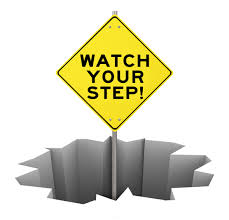Blogs
Setting the Bar High: Avoid Unnecessary Hazards at Your Practice
We’ve all seen comedies that open with a hapless protagonist walking into a boarding house, or seedy motel. He drops his bag on the floor and enters the bathroom, only to be horrified at its condition: filthy tile, rusted and greasy shower stall, brown liquid spewing from the faucet. What makes this kind of scene funny is the irony—no one enters a bathroom to take a shower or brush their teeth and expects to walk out feeling dirtier than before. Following the same logic, no one pays a visit to the doctor’s office in order to get sick or hurt, from patients seeking care, to the medical assistants, nurses, PAs, and coders who work there.
Both instances portray environmental hazards to a degree that may seem illogical, and, outside the context of a movie or television program, overblown. Unfortunately, many physician’s offices in the United States still fall prey to issues like faulty or exposed wiring, mold and mildew, and even the outbreak of blood-borne pathogens. There is a common thread running through both the motel and doctor’s office scenarios: neglect. Where the effect of the former is humorous, the latter can be deadly serious, and carry with it long-term repercussions.
The Usual Safety Suspects
How often do we hear about a medical worker stabbed by a needle when handling a bag of medical waste? The next few minutes can be among the most frantic and tense of their lives as they determine whether or not they have contracted a serious illness from the contact. You may be thinking that you’ve only encountered a story like this once or twice in recent memory. But the fact is, exposure in this fashion to blood-borne pathogens is still one of the biggest occupational hazards for medical workers. It may be time to take inventory. Is your practice stocked with safe sharps, and highly durable waste bags? Are all needle sticks adequately logged? Then there are ergonomic issues. Are your workers able to do their jobs not only efficiently, but comfortably, day in and day out?
While they don’t handle hazardous materials, patients, too, can also be put at risk, if office conditions are left unchecked. In an earlier post, we discussed several ways to make your waiting room more hospitable, from newer televisions with earphone set-ups, to a “café” area with fresh coffee and snacks, and even a fireplace for the colder months. If you are thinking about updating your reception area with these changes in mind, good—they are a worthwhile investment. But you must also take on the responsibility of their upkeep. Coffee machines, office aquariums, and other amenities present possible fire and electrocution hazards if they aren’t regularly maintained. Is the wiring installed properly, and not exposed? These measures are doubly important for pediatricians’ offices, for obvious reasons.
The Most Common OSHA Gripes
Among the OSHA’s most frequently cited violations in the past year were hazard communication, electrical wiring, respiratory protection, and fall protection. What sad story do these violations tell? That many practices still suffer from poor air quality, exposed wiring, slipping hazards, and a weak, or outdated hazard safety plan. Are problem areas cordoned off, and taken care of promptly? An unmitigated water issue can lead to worker slip-and-fall, but can also give way to mold and mildew issues. Are safety signs visible and updated, and hazardous waste clearly marked?
Lastly, and this one grinds OSHAs gears more than most, does your practice have an updated exposure control plan, and are all workers trained to follow it? Remember, it isn’t just the OSHA, but several other government agencies that can hand down pretty heavy fines for these easily avoidable safety violations.
Taking Charge
As a physician, and the head of your practice, the onus is on you to spearhead safety measures. Put simply, if you make safety and sanitation an important daily initiative, your staff will follow your example. A good idea would be to appoint a safety coordinator. The office manager may be a solid choice, though a better one may be a veteran nurse, someone who has high visibility, and enough medical knowledge under their belt. Assemble a committee to draft a safety plan, and eliminate all potential safety issues in the office.
Remember, these efforts are not just about compliance with OSHA and other agencies to avoid a slap on the wrist. They are part of a bigger effort to not just tell, but show patients and staff alike that you care about them, that your practice is, above all, a safe place, both to seek treatment, and to work.
Brian Torchin
| HCRC Staffing | Brian@hcrcstaffing.com | www.hcrcstaffing.com
– See more at: http://3.228.224.47/blog/#sthash.regjTzUx.dpuf

